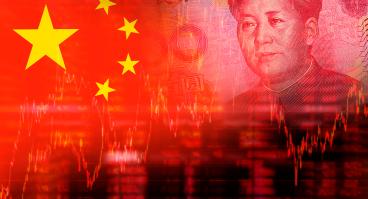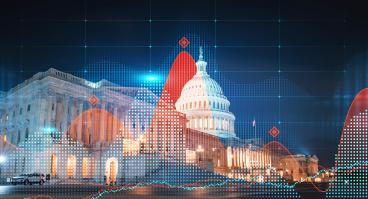Was There a Free Trade Era, and Is It Over?

Table of Contents
Author(s)
Share this Publication
- Print This Publication
- Cite This Publication Copy Citation
Simon Lester, "Was There a Free Trade Era, and Is It Over?" (Houston: Rice University’s Baker Institute for Public Policy, July 13, 2023).
In recent months, there have been excited proclamations from both traditional media voices and Substack upstarts about the end of “neoliberalism” and free trade, and a search for what comes next. The narrative being pushed here seems to be that for all his faults, former President Donald Trump recognized an important political flaw with U.S. “free trade” policies, and the sensible Biden administration wonks have been trying to translate Trump’s instinct into a coherent set of new policies.
But that narrative gets some fundamental points about the policy arc wrong. For one thing, “neoliberalism” is a vague and unhelpful term when it comes to describing actual policies. For another, we were never close to anything resembling free trade. Where we really are with trade policy today is where we have always been: Export and import interests are battling it out over the direction of policy, with geopolitics doing its usual work of making it more difficult to construct a sensible path forward.
The “Neoliberalism is Dead” Bandwagon
Economic policy is complex and nuanced, and many people respond by coming up with shorthand terms to make their points in political discussions. One of these terms is “neoliberalism,” which in the public discourse (as opposed to the scholarly/academic community) is used in a number of different ways: Some people use it to refer to extreme reliance on free markets; others may think of it as simple crony capitalism, with the government favoring well-connected corporations. For those who use the term, free trade is generally considered to be a core component of neoliberalism.
Whatever is meant by the term, there has been a mad rush to proclaim its death. Economist Branko Milanovic announced on Twitter that “I have seen two big ideologies fall apart in my lifetime: communism and neoliberalism.” In New York Magazine, journalist Eric Levitz told us that “The Biden Administration Just Declared the Death of Neoliberalism.” And as journalist David Wallace-Wells put it in the New York Times, “America’s ‘Neoliberal’ Consensus Might Finally Be Dead.”
To get a sense of the specifics here, for Wallace-Wells, the Inflation Reduction Act (IRA), with its electric vehicle and battery subsidies, “signal[led] the end of ... America’s uniform rhetorical commitment to the global reign of free markets.”
The reality, of course, is that electric vehicle subsidies are not new. Nor are airplane subsidies, farm subsidies, or solar power subsidies.
Are the IRA subsidies bigger than the subsidies that came before? Is the rhetoric different in the sense that more people are willing to use the words “industrial policy”? Maybe. But the change is more of a subtle shift than an old policy dying and a new one rising from its ashes.
Did We Really Have Free Trade?
Along with “neoliberalism,” free trade is also being buried. Economics pundit Noah Smith wrote a piece entitled, “The new industrial policy, explained,” in which he notes that “[w]e’re starting to learn what replaces the old free-trade consensus.” Along the same lines, a Politico piece states, “The president and his critics agree that the free trade era is over in Washington.” And the Washington Post editorial board proclaimed, “The era of unfettered free trade is over.”
Now, it may be that some of these pundits are using the term “free trade” loosely, in the sense of a policy that is merely in the direction of free trade. Nevertheless, people in the trade policy field will be forgiven if they scratch their heads and ask, “Did we really have a free trade era?” For someone who spent a career as a trade lawyer fighting off protectionist “fetters,” such statements are puzzling.
Part of the problem here may be the framing that policymakers have used over the past couple decades. Many trade agreements had “free trade” in the title even when they didn’t have full free trade as the content of the agreement. Free trade was a good marketing tool but not the actual preferred policy.
To be clear, many of these agreements were trade liberalizing, in the sense of moving us toward freer trade. However, the gaps in their coverage were quite large, and many of their provisions were not even about trade liberalization.
To take a few examples, in addition to the various subsidies noted above, there have been: abusive and arbitrary “anti-dumping” tariffs, such as the tariffs on Canadian lumber; protectionist provisions in statutes and regulations; Jones Act restrictions on shipping; “Buy American” procurement programs; tariff “peaks” such as a 25% tariff on imported trucks; import restrictions on baby formula; and a wide range of regulatory barriers to trade in services.
In addition, the much criticized bilateral “free trade” agreement isn’t some free market panacea. In fact, economists like to point out that these sorts of discriminatory arrangements could actually divert more trade than they create.
With all this in mind, calling this era the “free trade era” or talking about a “free trade consensus” seriously mischaracterizes the actual trade policy of the past several decades.
Enter China
Of course, everything is different because of China. China is something we have never seen before: The world’s second largest economy, a military threat, and an ideological rival all wrapped into one. The new “great power competition” and resulting security concerns, people argue, have changed everything.
But are things really that different? Haven’t we seen all this in some form before?
Back in the 1980s, Japan was widely seen as an economic rival that could overtake America, with the supposedly instinctive Donald Trump running ads stating that “for decades, Japan and other nations have been taking advantage of the United States.” And the dawn of the Cold War played a role in the development of the General Agreement on Tariffs and Trade, as governments grappled with ideological and defense questions related to the participation of Eastern European countries. Maybe the China concerns of today combine these economic and security issues in a way that adds to the complexity of the problem, but nothing here is fundamentally new for trade policy.
It is also worth noting in this context that China has a lot of potential internal economic problems on the horizon. As a result, the geopolitical situation that has everyone panicking today may look very different in the not too distant future.
Back to Work on a Boring Old Mixed Economy
Policy debates would be easier and clearer if there were just two camps with opposing views — free market supporters and industrial policy advocates — and one or the other was always totally in charge. That would give us a true test of how well each policy works. But as described above, actual economic policy is messy and reflects a mix of each of these policy views.
Over time, policy does shift a bit in one direction or the other, often at the urging of specific interest groups. Whether it’s the domestic steel industry arguing for tariffs on imported steel, or labor unions pushing to restrict trade with competitors in developing countries, someone will be trying to exert influence to restrict imports. At the same time, the U.S. also has export interests, and these groups will continue to push for more market access abroad. This battle between export and import interests has always been the core of what shapes U.S. trade policy and will continue to play that role.
The media, of course, has an interest in attention-grabbing headlines, so proclaiming the death of this or that will always generate clicks. But behind the scenes, it’s mostly the same old policy debate about how to structure the economy and trade policy. Pro-trade people will make their arguments; protectionists will make their arguments; businesses and other interest groups will weigh in; and geopolitics will get in the way. Out of all that we will get some version of the mixed economy we have always had.
The trading system has always been a carefully calibrated balance of modest constraints on protectionism. That characterization doesn’t make for a great headline, but it’s the boring yet important work that trade policymakers around the world are doing.
This material may be quoted or reproduced without prior permission, provided appropriate credit is given to the author and Rice University’s Baker Institute for Public Policy. The views expressed herein are those of the individual author(s), and do not necessarily represent the views of Rice University’s Baker Institute for Public Policy.



